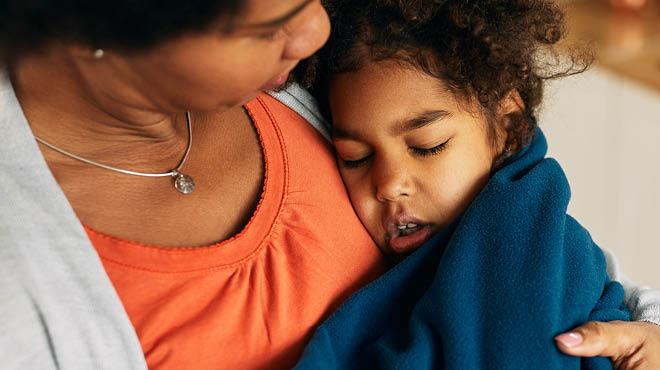Recent Posts
Answers to 3 common questions about measles

Measles is a serious illness that can lead to significant health complications. According to the Centers for Disease Control and Prevention (CDC), measles was declared eliminated from the U.S. in 2000. But measles cases are returning at a record pace in 2024.
While many viruses are not contagious or moderately contagious, measles is aerosolized and highly infectious. Measles spreads when an infected person coughs, sneezes or talks, which produces infected droplets. These droplets are either inhaled by others or live on surfaces for up to two hours after first contact.
People with measles are contagious for about eight days — four before a rash appears and four while a rash is present.
What are the symptoms of measles?
Measles symptoms appear seven to 14 days after contact with the virus. Measles occurs in stages and progresses over a two- to three-week period. Symptoms are different throughout each stage.
Stage one: Infection and incubation
The incubation period for measles is 10–14 days, during which time there aren't any signs or symptoms.
Stage two: Nonspecific signs and symptoms
Common first signs of measles include these symptoms:
- Dry cough
- Fever
- Red, watery eyes, known as conjunctivitis
- Runny nose
- Sore throat
Stage three: Acute illness and rash
In the third stage, you'll start to see a rash, which typically begins on the face. Tiny, white spots known as Koplik spots may appear inside the mouth two to three days after symptoms start. A measles rash appears three to five days after the first symptoms.
Over the next few days, the rash will spread to the arms, torso and legs. Accompanying the rash will be a quickly rising fever that may reach more than 105 degrees Fahrenheit. Eventually, the fever dips, and the rash clears up from bottom to top.
Who is at risk for measles?
Measles is most dangerous for children up to age 5 and immunocompromised adults over 65.
Measles complications can range from uncomfortable to life-threatening. Possible complications include ear infection, bronchitis, laryngitis or pneumonia. Approximately 1 in 1,000 people can get encephalitis, which is swelling in the brain that can lead to death.
Also called rubeola, measles may be serious or even fatal for young children. Statistics show that 1–3 in 1,000 children who become infected with measles will die from respiratory or neurologic complications.
Measles can be challenging to diagnose for physicians and nonmedical people in the U.S. due to the limited number of cases. If there are pockets where people are not vaccinated, or vaccine rates continue to fall across the country, more outbreaks could occur.
How is measles prevented?
The most effective way to prevent measles is by vaccination. The vaccine is primarily administered as the combination measles-mumps-rubella (MMR) or the measles-mumps-rubella-varicella (MMRV) vaccine.
The CDC recommends routine childhood immunization for the MMR vaccine, starting with the first dose at 12–15 months and the second dose at ages 4–6, or at least 28 days following the first dose.
The MMRV vaccine also is available to children ages 1–12. People born during or after 1957 who do not have evidence of immunity against measles should get at least one dose of the MMR vaccine.
It's crucial to ensure you and your children are vaccinated. The potential of becoming infected increases to 90% if not vaccinated.
One dose of MMR vaccine is approximately 93% effective at preventing measles; two doses are approximately 97% effective. Almost everyone who does not respond to the measles component of the first dose of MMR vaccine at age 1 or older will respond to the second dose.
Talk with your primary care clinician if you have any questions about measles or vaccinations.
Sarah Scherger, M.D., is a pediatrician in Austin, Minnesota.






